Have you ever accidentally used too much neatsfoot oil on your leather item? You know that sinking feeling when you realize you’ve gone a little too far with the oiling process and are unsure of what to do next. Don’t worry – this article provides answers to all the frequently asked questions about too much neatsfoot oil on leather, as well as some useful tips.
What is Neatsfoot Oil?
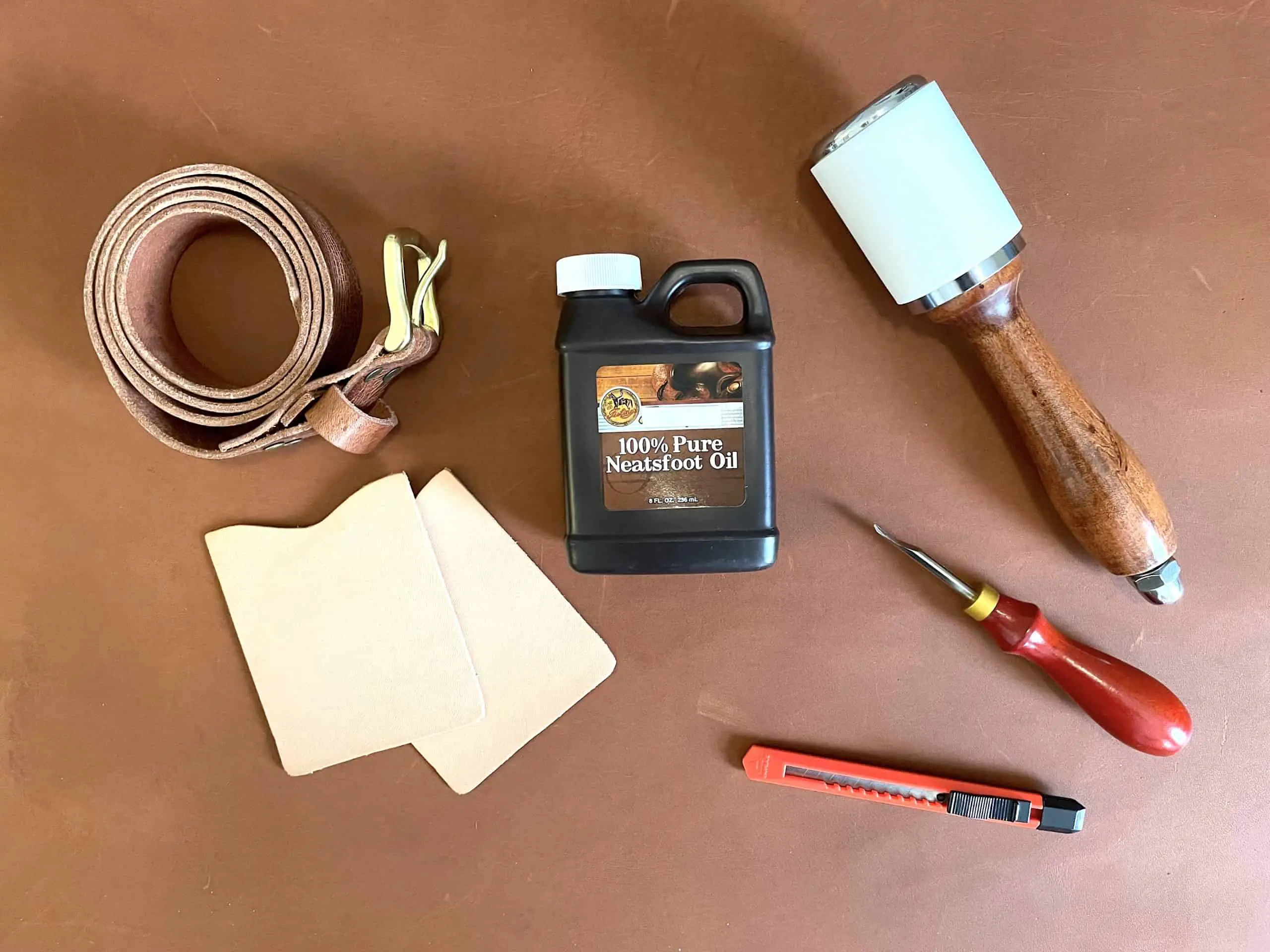
Neatsfoot oil is a type of oil derived from cattle bones and hooves. It’s used to soften, condition, and restore the suppleness of leather items.[2]
Types of Neatsfoot Oil
Neatsfoot oil is a popular leather conditioner used to soften, preserve and protect leather. It’s derived from the tallow of the neatsfoot (suet) in cow feet, but other animal fats may be used as well. Neatsfoot oil comes in two forms: pure neatsfoot oil and neatsfoot oil compound.[2]
Characteristics of Neatsfoot Oil
Neatsfoot oil is a natural conditioner that is commonly used to protect and preserve leather. It’s made from rendered beef or horse hooves and imparts a greasy, oily finish on the leather. The oil helps to keep water out of the material, preserving it for longer periods of time.
It also creates a softer feel on the leather and makes it more pliable. If you’re looking to soften leather, condition it, or make it water-resistant, neatsfoot oil is often the go-to solution.[2]
Pros and Cons of Neatsfoot Oil
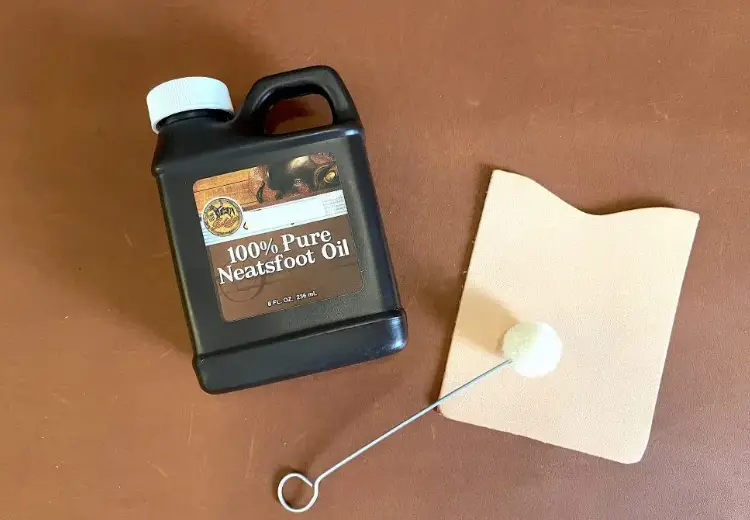
Neatsfoot oil is a popular leather conditioner that has been used for centuries to preserve and protect all types of leather. It’s made from rendered beef or horse fat, which gives it its unique color and odor. It’s also known for being highly effective in softening, moisturizing, and nourishing the fibers of leather items. Benefits include:
- Helps to preserve and protect the leather
- Keeps leather soft and supple
- Prevents cracking or splitting of dry, stiff leather
However, there are some drawbacks as well. Neatsfoot oil can darken lighter colored leather, make it more susceptible to staining, and actually damage fragile antique items if applied too liberally. It is also possible to use too much neatsfoot oil, resulting in a greasy, oily buildup on the leather.
What happens when you use too much neatsfoot oil on leather?
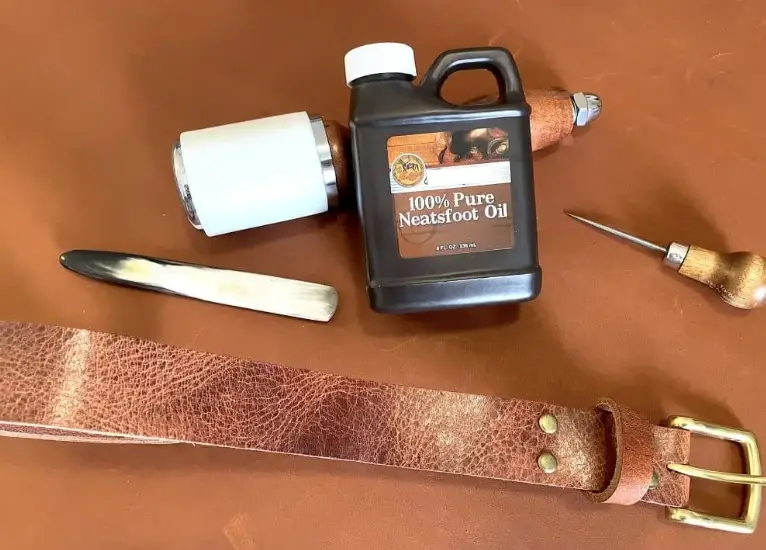
Breaks down leather fibers
When you apply too much neatsfoot oil on leather, the fibers in the leather can break down over time. The oil penetrates into the leather, softening and weakening it until it starts to crack or become brittle. This can cause irreversible damage to your leather goods that may not be repairable.[1]
The leather becomes extremely soft and loses shape
When neatsfoot oil is applied in excess, the leather can quickly become very soft and pliable. Too much of this oil will reduce the structure of the leather and cause it to lose its shape over time. This makes it difficult to keep your leather goods looking neat and tidy since they won’t be able to hold their shape any longer.[1]
Causes leather to darken
Another common problem with too much neatsfoot oil is that it can cause the leather to darken in color. This can have a negative effect on the overall look of your goods and make them appear dirty and aged even when they are not.[1]
Weakens the stitches
Finally, too much neatsfoot oil can weaken the stitches on your leather goods. This means that if you’re using a lot of this oil, it could cause your seams to split or fray over time, which could result in costly repairs.[1]
Shoes tear at stress points
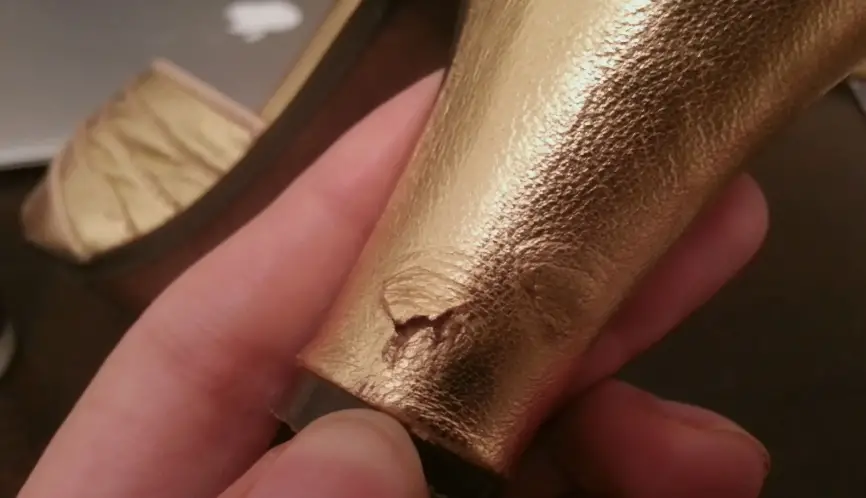
When too much neatsfoot oil is used on shoes, the leather can become so soft that it loses its ability to resist stress and tear at certain points. This can cause your shoes to wear out more quickly than normal and may eventually lead to them needing to be replaced.[1]
Leather feels greasy
One of the most obvious signs that you’re using too much neatsfoot oil is that the leather can start to feel greasy or slick to the touch. This can make your goods look unappealing and may even cause them to be uncomfortable to wear.[1]
Possibility of mold and mildew growth
Finally, when too much neatsfoot oil is used on leather goods, it could create the perfect environment for mold and mildew growth due to its moisture-retaining properties. This can leave your goods with a musty smell or visible signs of fungal growth.[1]
How to remove excess neatsfoot oil from leather
Method 1: Wipe off excess oil before it soaks in
The first thing you should do if you think you have put too much neatsfoot oil on leather is to wipe off the excess before it has a chance to soak in. Use a clean, dry cloth and gently rub away the excess neatsfoot oil until no more comes off. This should remove most of the excess and help prevent it from soaking into the leather.[2]
Method 2: Use saddle soap to remove neatsfoot oil
If the neatsfoot oil has already soaked into the leather, you can try using a saddle soap to remove it. Saddle soaps are designed specifically for leather and are effective at cleaning off dirt, grime and oils from leather surfaces. To use this method, dampen a clean, soft cloth with warm water and add a small amount of saddle soap to the cloth. Gently rub the dampened cloth on the affected area until all traces of neatsfoot oil are removed.[2]
Method 3: Use baking soda to absorb excess neatsfoot oil
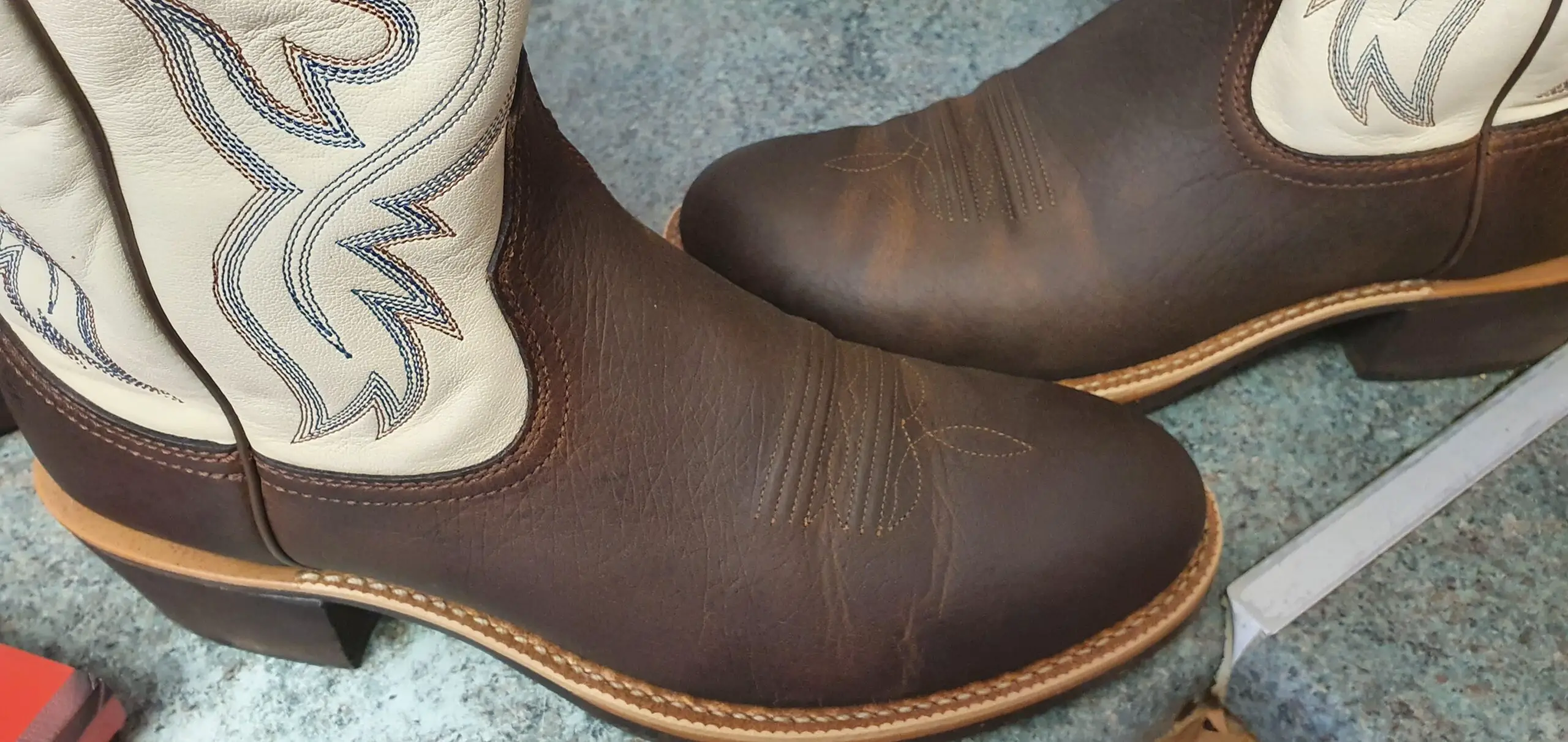
If you have tried wiping and cleaning off the neatsfoot oil but it still won’t come off, you can try using baking soda to absorb the excess oil. Baking soda has porous particles that will absorb oils from leather surfaces. To use this method, cover the affected area with baking soda and let it sit for a few hours. Gently brush away the baking soda with a clean, dry cloth and repeat if necessary.[2]
Method 4: Wash out the oil
If the neatsfoot oil is still not coming off after using baking soda, you can try washing it out with a mild dish soap. Dish soaps are specifically designed for cleaning and can be used on leather surfaces. To wash out the neatsfoot oil, mix one part mild dish soap with four parts warm water and use a dampened cloth or sponge to gently scrub the affected area. Rinse with warm water and let air dry.[2]
Method 5: Lighten the leather
If the neatsfoot oil has caused a darkening of the leather, you can try lightening it with lemon juice or white vinegar. These natural ingredients are mild enough for use on leather and may help to lighten any discoloration caused by the neatsfoot oil. To use this method, mix equal parts lemon juice (or white vinegar) with warm water and use a dampened cloth to gently rub the affected area. Let air dry, and repeat if needed.[2]
How to apply neatsfoot oil on leather the right way?
Applying neatsfoot oil on leather is an essential part of cleaning and conditioning it. To do the job right, you’ll need to understand not only how to apply the oil but also how much to use. Too much neatsfoot oil can cause a range of problems including discoloration, cracking, water spots, and mold/mildew growth.[1]
So, is neatsfoot oil bad for leather?
No, neatsfoot oil is not bad for leather. In fact, it can be beneficial in helping to keep leather soft and supple by nourishing the natural oils found in the hide. However, too much of a good thing can be detrimental! Applying too much neatsfoot oil will actually cause the leather to look greasy and feel waxy, and can make it more prone to dirt and grime buildup.[1]
How long does it take for neatsfoot oil to dry?
It can take anywhere from 4 to 48 hours for neatsfoot oil to dry, depending on the temperature and humidity of your environment. If you’ve applied too much oil, it may take longer than usual for it to dry. Make sure that you allow enough time for the oil to completely dry before using the leather item again.[1]
Does neatsfoot oil dry out leather?
Neatsfoot oil is often used to condition leather and keep it soft and pliable. However, too much neatsfoot oil can build up on the material, making it stiff and sticky. The good news is that this problem is easily solvable by using a few simple techniques.
One of the first things that you should do if you have applied too much neatsfoot oil to your leather is to allow the material to dry out. This can be done by spreading the leather out in a well-ventilated room and allowing it to air-dry for several days or even weeks. You will then need to use some gentle cleaning methods, such as using a damp cloth and saddle soap, to remove any excess oil from the leather.
Once the neatsfoot oil has been removed, you can apply a small amount of neatsfoot oil or another leather conditioner to the material in order to help replenish any lost moisture and keep it soft and pliable. Applying too much conditioner, however, can lead to the same problem as before and should be avoided.[1]
FAQ
Can neatsfoot oil damage leather?
Yes, neatsfoot oil can damage leather if it is used too liberally. If too much neatsfoot oil is applied to a piece of leather, it will cause the material to become overly soft and pliable and weaken its strength. Over time, this can lead to the leather cracking, splitting, or becoming otherwise damaged.
Can you use too much neatsfoot oil?
Yes, it is possible to use too much neatsfoot oil. As a general rule of thumb, no more than 1-2 ounces of neatsfoot oil should be used at once for every 12–15 square feet of leather being treated. If you use more than this amount, it will cause the leather to become excessively soft and weaken its strength.
How long does it take for neatsfoot oil to dry?
Neatsfoot oil typically takes 6 to 8 hours to dry completely. It’s important to allow the leather ample time to absorb the oil before use, as any excess will weaken its strength and durability over time.
How do you dry oil out of leather?
To dry excess oil out of leather, you can blot the affected area with a paper towel. You may also want to sprinkle some cornstarch on the area and let it sit for several hours before wiping away any residue. Additionally, you can use a fan or hairdryer set on low heat to help speed up the drying process.
Does neatsfoot oil dry out leather?
No, neatsfoot oil does not dry out leather. Instead, it helps to condition the material and keep it supple for a longer period of time. However, too much neatsfoot oil can cause the leather to become overly soft and weaken its strength over time.
Is there a way to rehydrate leather?
Yes, there are several ways that you can rehydrate leather. One way is to use a mixture of water and vinegar or rubbing alcohol applied with a soft cloth. Additionally, you can purchase special leather oils and conditioners from most craft stores that will help to restore the material’s natural oils and keep it hydrated.
Does oil destroy leather?
Yes, oil can destroy leather if it is used in excessive amounts. The oil will cause the material to become overly soft and weaken its strength over time, eventually leading to cracking and splitting of the leather. Therefore, it’s important to only use as much oil as necessary when conditioning your leather products.
What happens when leather gets too wet?
If leather gets too wet, it can cause the material to become stiff and brittle. It can also lead to discoloration or fading of the leather’s original color. Therefore, it is important to avoid getting your leather items overly wet when cleaning them. If you do need to use water for cleaning purposes, make sure that you dry the item thoroughly afterwards.
Useful Video: Using neatsfoot oil to condition my veg tan leather bag – 2 year patina
Conclusion
If you have put too much neatsfoot oil on your leather, don’t be alarmed. It is possible to remove the excess and restore the leather to its original condition. The best way to do this is by using a combination of cleaning cloths, saddle soap, rubbing alcohol, and glycerin soap. Before attempting any of these treatments, make sure to test a small, inconspicuous area of the leather first.
The best way to avoid this problem in the future is to use neatsfoot oil sparingly and rub it into the leather with a clean cloth or brush. Doing so will help you maintain your leather goods for years to come. With proper care and maintenance, you can keep them looking great for a long time.
We hope this article has helped you better understand how to treat and care for leather goods that have been over-treated with neatsfoot oil. If you have any other questions, please don’t hesitate to reach out and let us know. We are more than happy to help!
Thanks for reading!
References
- https://leatherinsights.com/too-much-neatsfoot-oil-on-leather/
- https://www.libertyleathergoods.com/neatsfoot-oil/




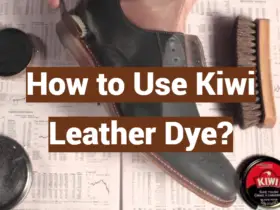


Leave a Reply